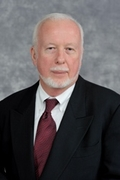If you live in a hurricane-prone area, you probably know about the five-category Saffir-Simpson Hurricane Wind Scale. It defines Atlantic Basin hurricanes on the basis of sustained wind speeds at a hurricane’s core and likely damage levels.
Category 1 ranges from 74 to 95 miles per hour; Category 2 is 96-110 mph, Category 3 (which starts the “major hurricane” range) is 111-129 mph; and Category 4 runs from 130-156 mph.
The problem is Category 5, which is set at 157 mph or higher. Category 5 has no upper limit and scientists and the media calling a storm a “strong” Category 5 really doesn’t communicate much, at least to the public.
Where does “strong” begin and, more important, where does it end? And then what?
The idea of a Category 6 has already seen some discussion in scientific circles, including by The Weather Channel, but it’s time for the scientific community, in cooperation with the media, to lead a much broader public discussion. To help trigger this discussion, what if Category 5 storms were capped at 179 mph and Category 6 storms set as 180 mph or higher?

The historical record actually bears out creating a Category 6. The “Great Labor Day Hurricane” in 1935 reached 185 mph when it hit the Florida Keys, and in 1980 Hurricane Allen hit 190 mph sustained. Later, Mitch (1998), Rita (2005) and Irma (2017) reached 180 mph. Gilbert (1988) and Wilma (2005) reached 185 mph, as did this year’s Dorian.
The point is that we already have had Cat 6 storms. Then, should the need arise for a Category 7, Category 6 storms could be capped at 199 mph, with Category 7 starting at 200 mph.
Let’s hope that isn’t necessary, although in 2015 Hurricane Patricia off the west coast of Mexico hit an astounding 215 mph before rapidly weakening against the interior mountains.
Opening a discussion of at least a Category 6 for Atlantic Basin storms has some urgency. Climate-change scientists are arguing for increasing numbers of more intense storms in coming decades. That is, storms with sustained wind speeds of 180 mph should no longer be viewed as extremely rare.
While not common, we will likely see those higher wind speeds more often, so as difficult as it is to say, we have to begin to prepare — physically, operationally and psychologically — for “Cat 6s.”
One solution to the category-numbering problem would be to take a page from the earth science community’s complicated saga of attempts in the 19th and 20th centuries to define levels of “felt and observed” earthquake effects on the built environment.
The eventual result was the “Modified Mercalli Intensity” (MMI) scale (not to be confused with earthquake magnitudes, which measure an event’s energy release at its point of origin deep in the Earth).
Currently, the U.S. Geological Survey employs a 10-category MMI scale. That scale uses Roman numerals, with “I” indicating “not felt,” but “X” indicating widespread masonry building collapses and even buildings designed to be earthquake-resistant showing “moderate to severe damage.”
With the MMI scale as a template, the hurricane solution would be a Modified Saffir-Simpson Hurricane Wind Scale with, for now, six categories. The implications are, of course, enormous, from building codes and assuring post-impact critical facilities to emergency management.
But the most immediate problems would revolve around possible public misunderstanding and reaction.
The scientific community, hurricane experts in particular, already worry that the emphasis on wind speeds tends to distract attention from the statistically more dangerous components of hurricanes: storm surge and flooding.
This is a very real concern. In 2012 Hurricane Sandy did enormous damage to New York and New Jersey especially from storm surge and flooding, even though it made landfall as a post-tropical cyclone with Cat 1 winds.
And in 2017, most of the human and property losses from Hurricane Harvey in Texas derived from “biblical” rainfall and consequent flooding around Houston, not so much the wind damage.
The second problem with having a Cat 6 category will be public reaction to hearing the term if it is not clearly explained and the exposed populations not properly informed and prepared.
One has to worry, for example, about evacuation behavior if the term Cat 6 is dropped on a relatively unprepared public. Just think back to the surprising (and not really objectively necessary) levels of evacuation in the run-up to 2017’s impacts of Hurricane Irma in South Florida. Consider what might happen with a Category 6 storm bearing down.
So, let us start a robust Cat 6 and “Modified Saffir-Simpson” conversation now. The 2019 hurricane season officially comes to an end on Nov. 30 — and the next season will be only six months away.
Richard S. Olson, Ph.D., is director of the Extreme Events Institute, director of the International Hurricane Research Center and professor at the Steven J. Green School of International and Public Affairs at Florida International University in Miami.
“The Invading Sea” is the opinion arm of the Florida Climate Reporting Network, a collaborative of news organizations across the state focusing on the threats posed by the warming climate.



